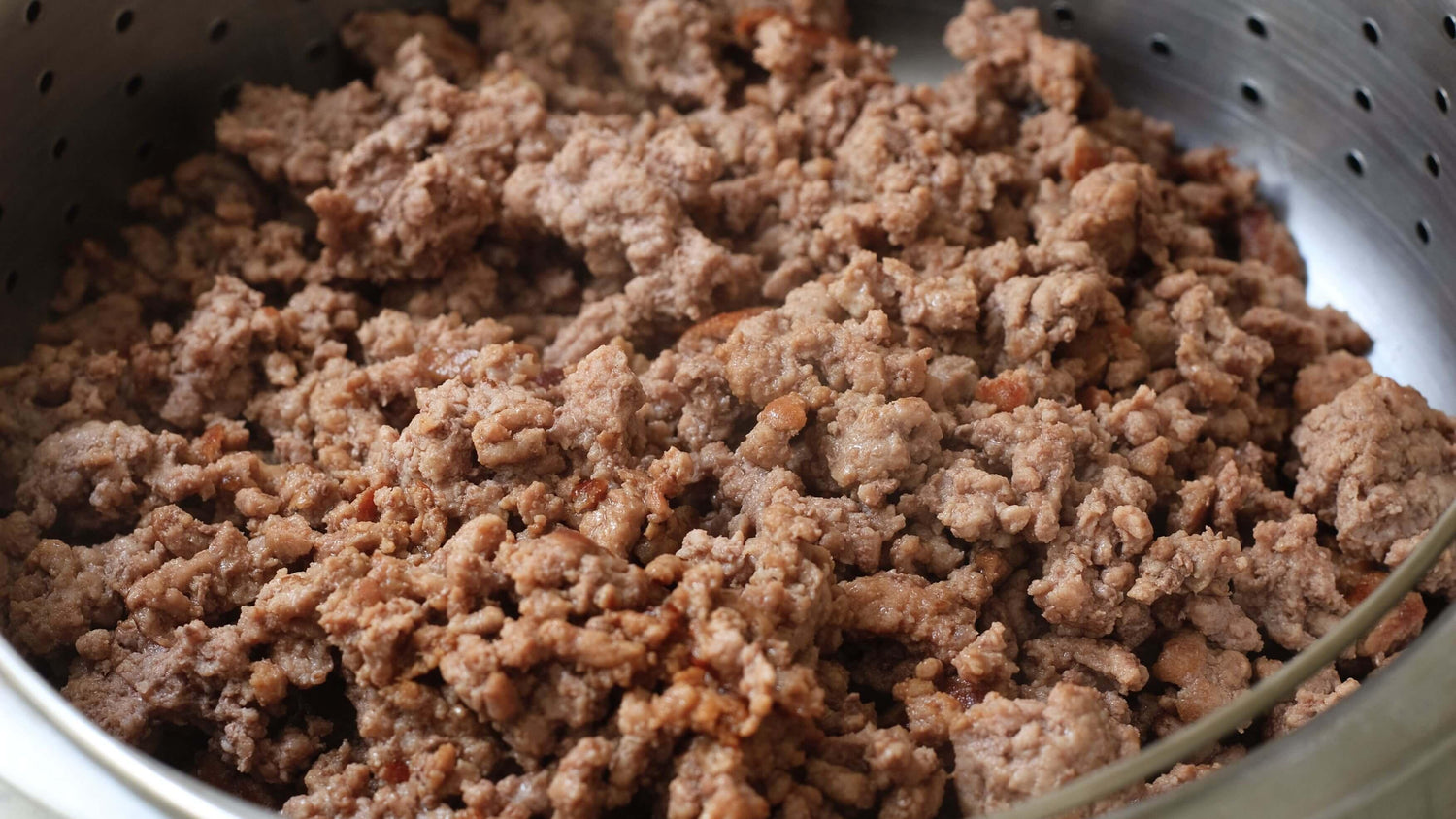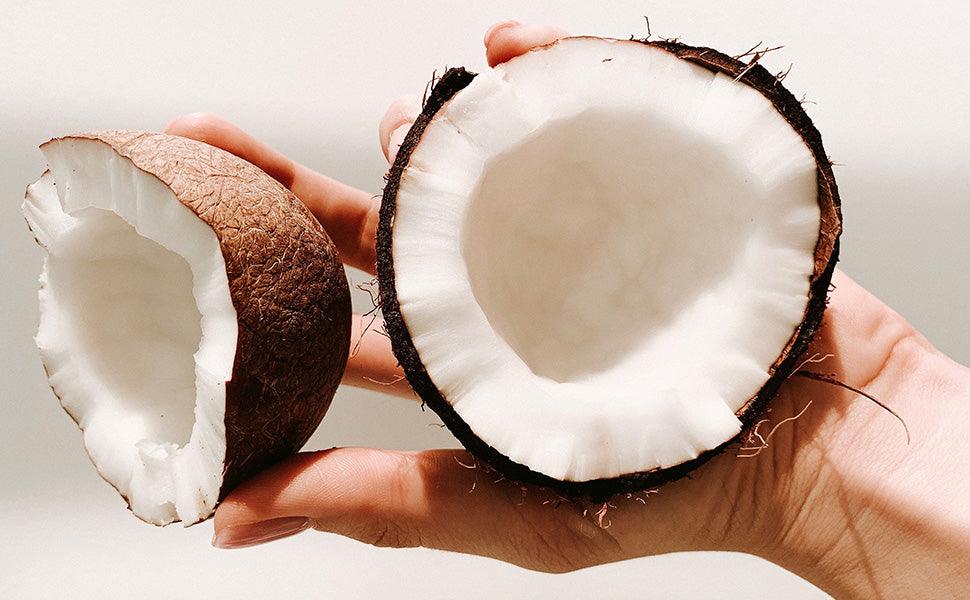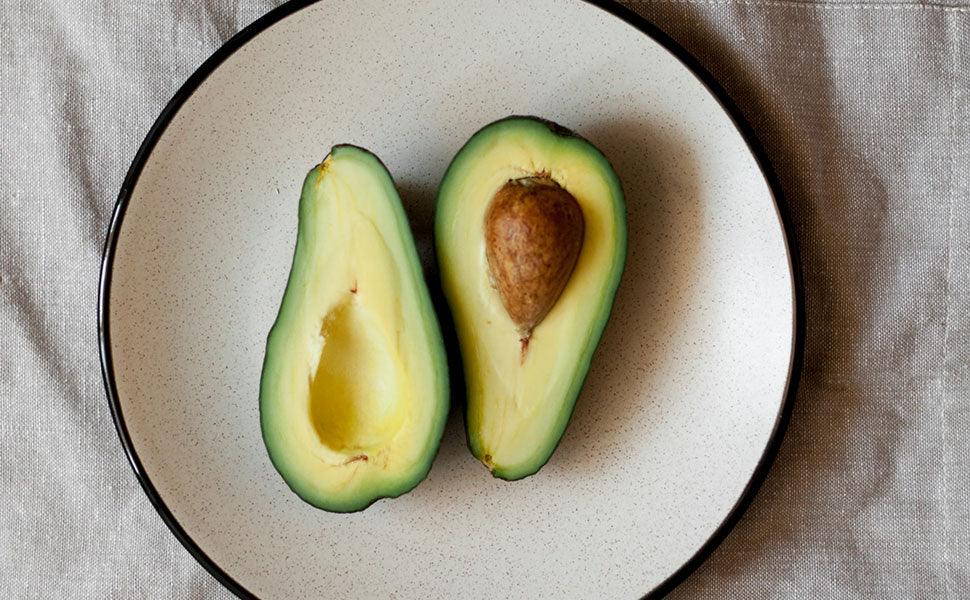TABLE OF CONTENTS
When you walk into a supermarket, it may be tempting to simply pick up the first tray of ground beef you see, run it by the register or the self-checkout lane, and be on your way back home. After all, they can't be that different, right?
Absolutely not!
As with everything, there are always a few key factors you have to keep your eyes peeled for to ensure you're making the best possible choice for your ground beef. Read on in the following to find out what they are.

How to Buy the Best Ground Beef
Color
The color is one of the quickest ways for you to judge the quality of ground beef. If the beef is gray or starting to gray, you definitely want to stay from picking up that beef—it's already gone bad, or at least going bad. Especially if the meat is exposed to the air (as most containers are airtight) and it does not regain its color.
If the color is a bright red, it's generally safe to assume that the meat is fresh and readily used for cooking.
Smell
As with most meats, the smell test is another easy way to sniff out ground beef that's spoiled. Even if you've never smelled spoiled meat before, your nose is conditioned to react negatively to smells like that as an evolutionary mechanism against food poisoning. Trust us, you'll know it when you smell it.
Source grind
Source grind means the part of the cow that the ground beef comes from. With ground beef, it can be difficult to tell at a glance what exact cut it is—and different cuts are used for different dishes. You don't want to end up with the wrong cut!
There are four varieties of ground beef you'll see at the grocery: ground round, ground sirloin, ground chuck, and ground beef. The first three are source grinds, whereas ground beef is just generic ground beef taken from a variety of different cuts.
The ground beef's source grind can influence its taste, texture, and leanness. Speaking of leanness...
Lean-to-fat ratio
Your lean-to-fat ratio is the division of lean meat and fat in your ground beef. Depending on your needs, you might want a little bit leaner, or you might want more fat. The source grinds all correspond to different lean-to-fat ratios. Hamburgers, for example, favor fattier ratios. The lean-to-fat ratios for the different source grinds are as follows:
Ground sirloin: 85% lean, 10% fat ("85/15")
The leanest of all source grinds, ground sirloin is taken from the middle of the cow. It has the lowest fat content, which makes it the healthiest option. However, be aware that this also makes it dry out quickly. It also does not hold together like ground chuck, meaning it falls apart if shaped, as patties are in hamburgers.
If the term sirloin is familiar, it's because this is the cut of meat you'll find used in steaks such as the porterhouse or tomahawk.
Ground round: 90% lean, 15% fat ("90/10")
Ground round is taken from the round primal cut, which is near the cow's rump. At 15% fat, ground sirloin is great for tacos and pasta sauce. These have fewer calories as well due to a lower fat percentage than ground chuck while still retaining flavor, making them a great meat choice for heavy dishes like pasta and tacos.
Ground chuck: 80% lean, 20% fat ("80/20")
This is a cut that's found around the neck and shoulder. With a higher fat percentage than other source grinds, this makes ground chuck ideal for hamburgers, because it is easier to shape and is juicier than either ground sirloin or ground round. The extra fat gives the ground chuck an extra boost of flavor that leaner cuts of meat otherwise wouldn't have.
Do-It-Yourself
If the different source grinds laid out above don't quite have the ratio you need, then you can go to a butcher and discuss what kind of tailored grind you need. The great thing about ground beef is that it's easy to look for exactly the kind of ground beef you want.
If you're looking for ground beef that's a bit more flavorful and easier to work with, you can opt for high-fat ground beef; if you're looking for healthier options, you could opt to use leaner meat. This is all possible as long as you have a meat grinder or can ask a butcher's shop to do the grinding for you.
Ground beef is a versatile portion of meat that you can feature in a variety of meals. It's used in hamburgers, spaghetti bolognese, tacos, steak tartare, meatballs, and so many more! The finely-chopped (or minced) beef is tender, easy to eat, and can be added to any dish that needs a bit more meat.
With such versatility, it's an important and basic chef's skill to know how to cook your ground beef the right way—sufficiently brown and flavorful!

Tools Required to Cook Ground Beef
In order to get that nice, brown finish on your ground beef, you have to consider your choice of tools and your methods.
For your skillet, stainless steel or cast-iron will work better than a non-stick for this method; the trick is to not move the ground beef too much. This gives it a nice crust as the pan has time to heat the ground beef, and stainless steel or cast-iron skillets do a good job here. On non-stick pans, ground beef will slide around more, making it more difficult to apply a lot of heat to a specific part of the beef.
You can use whichever cooking oil you're comfortable with; personally, we prefer olive oil! If you've cooked before, you may have already heard of all the benefits that come from using olive oil.
With its ratio of good-to-bad cholesterol, this is a good cooking oil to use to offset the fat and grease from ground beef, which means you can still have a dish on the healthier side without restricting yourself with the ground beef that you use!

How to Brown Ground Beef in a Skillet
When you have the meat in the pan, spread out the ground beef across the surface of the skillet so that it cooks as evenly as possible. Leave it there for a moment so that it has time to crust the beef, which gives it more flavor and extra texture.
We're sure you're excited to get to the recipe, so let's dive right in! At the end of the article will be a quick buying guide to help you locate and select the best possible ground beef for you.
With that out of the way…
Recipe: Ground Beef for Tacos
Before we begin, it's important that you have all the ingredients you need within arm's reach. This minimizes distractions, allowing you to focus on cooking completely. Use the following list as your checklist to make sure you have everything on hand:
- 1 lb. of ground beef
- 1 tbsp of cooking oil
- 1/4tsp of table salt (if desired)
- 1/4tsp of black pepper (if desired)
- skillet
- spatula
Preparation
Before anything else, make sure you've had your ground beef out on a plate around 20 minutes before you start cooking to give it time to come to room temperature. Doing this allows the beef to breathe and makes it easier to cook it more evenly.
If your ground beef is frozen, leave it in your refrigerator—not the freezer—overnight beforehand. You can then leave it out for 20 minutes before cooking, so it comes to room temperature.
When handling raw beef, cleanliness is of the utmost priority. Make sure that you've washed your hands and sanitized your skillet, bowls, chopping boards, and knives before you handle the meat. Even your countertop should be sanitized.
When using a knife to cut the raw beef, make sure you don't reuse it on the beef after using it to cut other ingredients, such as vegetables, as this can easily contaminate your raw meat. If you have only one knife and need to go back and forth between your meat and other ingredients, make sure to wash between each use. Yes, it's important.
Raw beef products are susceptible to bacteria such as E. coli, salmonella, and listeria. If you ingest beef that hasn't been cooked all the way through or beef that's been exposed to this bacteria, you are most certainly going to have a bad time!
If you've prepared steak before, you might be used to cooking beef rare or medium-rare. The same methods cannot be used for ground beef—it must be cooked all the way through to avoid any potential health risks!
Preheating
Pour out your tablespoon of cooking oil onto your skillet and spread it out so that it coats the entire surface area of the pan, and allow it to heat up for about 2 minutes.
Cooking Proper
- When the 2 minutes have elapsed, the oil should be hot enough for you to now add the ground beef. Pour out the ground beef onto the skillet, and—just like with the cooking oil—spread it out across the surface of the skillet such that it covers the entire skillet.
- Having a thinner layer of meat allows the meat to cook through faster and more evenly, rather than just having it in a tall mound in the middle with only a small surface area exposed to the heat.
- After that, let the ground beef patty sit as it is for about 5 minutes on medium heat. Leaving it as is allows the beef to cook more thoroughly, giving it a nice brown color. This will also give it a good crust, which adds texture to the beef.
- Once enough time has elapsed, start breaking the meat apart into smaller portions. You can start flipping the beef over to cook the other side. With these smaller clumps, you can target parts of the beef that haven't been cooked all the way through.
- One easy way to identify undercooked portions of the beef is to look for the color pink: browning is generally a good indication that meat has cooked properly, especially darker browns. Err on the safe side by cooking meat that carries a lighter shade of brown than is normal for ground beef.
- Take note that beef browns at 155 degrees Fahrenheit, but bacteria are killed off at 161 degrees. An extra 5 minutes to cook all the way through should do the trick. To be sure, aim to cook your ground beef to about 165 degrees F.
- With the meat now cooked through, you'll want to drain the grease/oil so that your beef isn't so greasy. Have a strainer out and pour off the oil into a heat-resistant and disposable container. Leave a little bit though, so that your ground beef isn't too dry.
- Never pour oil down the drain! Once thoroughly drained, you can begin stirring in the pepper and the salt to season. Stir the beef thoroughly to spread the seasoning.
- At this point, you can take the beef off the fire and use it as you like in whatever recipe you have in mind!
That's all there is to cooking ground beef! It might take a bit of tweaking according to your stove, as everyone has different stoves, but once you've found the appropriate heat, you'll have perfectly browned ground beef every time!

Conclusion
We hope you've learned plenty from this article! Knowing how to prepare ground beef and select ground beef at the market are powerful skills that should be a part of any budding chef's culinary repertoire. Ground beef is a versatile ingredient — it's easy to find, inexpensive, and cooks quickly. Whether you're making burgers or tacos, the options for ground beef recipes are endless.
Equipped with this knowledge, you'll find yourself more capable of diversifying your recipes and dishes by adding a ground beef component to them, especially ground beef that you know how to finetune to your needs!






















Leave a comment
All comments are moderated before being published.
This site is protected by hCaptcha and the hCaptcha Privacy Policy and Terms of Service apply.